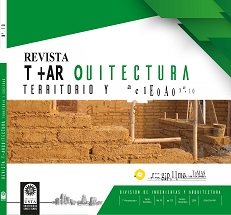Semiótica y composición en la iconografía religiosa de los siglos - XVI - XVIII en Tunja
Main Article Content
Abstract
This article presents the main meanings of the iconography that was developed in the province of Tunja, visible in the religious painting of the XVI, XVII and XVIII, centuries. To this end, an analysis of this drawn city and the collective imagery that framed the visual culture of the “Colonial Tunja” is presented. To achieve this, this reflection is divided into three parts. Firstly, the methodological model that was advanced under a propositive approach and an inductive perspective is presented, which emerged from the elimitation of the main religious images present in the city, 96 in total, from these periods. Secondly,a characterization was made that allowed defining the main themes of religious painting, a situation onwhich, a characterization of the main meanings and their contexts was consolidated, to conclude with a reflection on the incidence of these meanings in the social structure. Of the city of Tunja in the period under study that corresponded to the Colonial order of the city.
Article Details
Section
Artículos
References
AGUILERA, Rafael. Guía Histórica Ilustrada de Tunja. Escuelas salesianas, 1939. P. 79.
ARANGO, Magdalena y otros. HISTORIA DE LA VIDA COTIDIANA EN COLOMBIA, ed. Grupo editorial norma. Bogotá. año.1996. p.103.
APRILE. Jacques. (1991). La ciudad Colombiana. Colección de textos Universitarios. Banco Popular
BRICEÑO Manuel y RUBIO, Ozias. Tunja, desde su fundación hasta la época presente. Imprenta Eléctrica, de Bogotá, 1909. P. 351.
CORRADINE Angulo Alberto. “La Arquitectura en Tunja” ed. Academia Boyacense de Historia, año 1990. P. 123.
CORRADINE Angulo Alberto. Inventario de bienes arquitectónicos y monumentales del centro histórico de la ciudad de Tunja. Colcultura. Año 1973.
CORRADINE Magdalena. Los fundadores de Tunja genealogías. Ed academia Boyacense de historia. Año 2008. P. 311.
CORREA, Ramón. “Historia de Tunja”. Ed. Tunja, Academia Boyacense de Historia, año, 1987. P. 232.
CORTES, Alonso Vicenta. Tunja y sus vecinos. Año 1985, Repertorio Boyacense No 317, Tunja, abril 1985, p. 1-58.
MATEUS Cortes Gustavo. TUNJA EL ARTE DE LOS SIGLOS XVI- XVII- XVIII Litografía Arco Bogotá 1989.
PAVONY German. LOS AÑOS DEL CAMBIO HISTORIA URBANA DE BOGOTA 1820 – 1910 – Ed. CEJA. Bogotá. Año.2000. p.16.
PERGOLIS Juan Carlos ESTACIÓN PLAZA DE BOLÍVAR. ed. Alcaldía Mayor de Bogotá año 2000. p.p.11.16.
SEBASTIAN Santiago. La Ornamentación en el nuevo reino de granada. Ed. Año. 1964.
WIESNER Luis. Tunja Ciudad y poder en el siglo XVII: ed. Universidad Pedagógica y Tecnológica de Colombia. Año 2008. P. 307.
ARANGO, Magdalena y otros. HISTORIA DE LA VIDA COTIDIANA EN COLOMBIA, ed. Grupo editorial norma. Bogotá. año.1996. p.103.
APRILE. Jacques. (1991). La ciudad Colombiana. Colección de textos Universitarios. Banco Popular
BRICEÑO Manuel y RUBIO, Ozias. Tunja, desde su fundación hasta la época presente. Imprenta Eléctrica, de Bogotá, 1909. P. 351.
CORRADINE Angulo Alberto. “La Arquitectura en Tunja” ed. Academia Boyacense de Historia, año 1990. P. 123.
CORRADINE Angulo Alberto. Inventario de bienes arquitectónicos y monumentales del centro histórico de la ciudad de Tunja. Colcultura. Año 1973.
CORRADINE Magdalena. Los fundadores de Tunja genealogías. Ed academia Boyacense de historia. Año 2008. P. 311.
CORREA, Ramón. “Historia de Tunja”. Ed. Tunja, Academia Boyacense de Historia, año, 1987. P. 232.
CORTES, Alonso Vicenta. Tunja y sus vecinos. Año 1985, Repertorio Boyacense No 317, Tunja, abril 1985, p. 1-58.
MATEUS Cortes Gustavo. TUNJA EL ARTE DE LOS SIGLOS XVI- XVII- XVIII Litografía Arco Bogotá 1989.
PAVONY German. LOS AÑOS DEL CAMBIO HISTORIA URBANA DE BOGOTA 1820 – 1910 – Ed. CEJA. Bogotá. Año.2000. p.16.
PERGOLIS Juan Carlos ESTACIÓN PLAZA DE BOLÍVAR. ed. Alcaldía Mayor de Bogotá año 2000. p.p.11.16.
SEBASTIAN Santiago. La Ornamentación en el nuevo reino de granada. Ed. Año. 1964.
WIESNER Luis. Tunja Ciudad y poder en el siglo XVII: ed. Universidad Pedagógica y Tecnológica de Colombia. Año 2008. P. 307.

